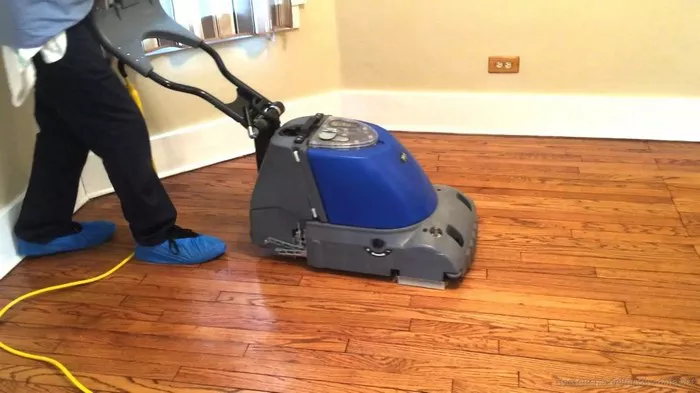Maintaining clean floors is not just about aesthetics; it’s also essential for hygiene and the longevity of your flooring. However, the question of how often to scrub floors is one that many homeowners grapple with. In this guide, we’ll explore various factors that influence the frequency of floor scrubbing, effective cleaning techniques, routine maintenance tips, special considerations for different flooring types, health and hygiene implications, time-saving strategies, and eco-friendly practices.
Frequency of Cleaning
The frequency of floor scrubbing depends on several factors, including the type of flooring, foot traffic, presence of pets and children, and personal cleanliness preferences. High-traffic areas such as entryways, kitchens, and living rooms may require more frequent cleaning compared to less-used spaces like spare bedrooms or formal dining rooms.
For heavily trafficked areas with pets or children, a daily or bi-weekly cleaning regimen may be necessary to maintain cleanliness and hygiene. In contrast, areas with less foot traffic may only require weekly or bi-weekly cleaning sessions.
Cleaning Techniques
Effective floor scrubbing begins with the right techniques and tools tailored to your flooring type. Here’s a breakdown of cleaning techniques for common flooring materials:
1. Hardwood Floors: Use a damp mop or specialized hardwood floor cleaner to avoid damaging the wood. Avoid excessive water, as it can cause warping or damage the finish.
2. Tile Floors: Sweep or vacuum to remove loose debris, then mop with a mild detergent solution or specialized tile cleaner. Grout lines may require additional attention with a grout brush.
3. Vinyl Floors: Sweep or vacuum regularly to prevent dirt buildup, then mop with a mild detergent solution or a cleaner specifically formulated for vinyl flooring.
4. Laminate Floors: Sweep or vacuum with a soft brush attachment to remove dust and debris, then mop with a damp microfiber mop or cloth using a gentle cleaning solution.
Routine Maintenance
Implementing a consistent maintenance routine can help prevent dirt buildup and minimize the need for deep cleaning sessions. Here are some tips for maintaining clean floors on a daily or weekly basis:
1. Sweep or Vacuum Regularly: Remove surface dirt and debris to prevent scratching and dulling of the floor finish.
2. Wipe Spills Immediately: Promptly clean up spills to prevent staining and damage to the flooring material.
3. Use Entry Mats: Place mats at entryways to trap dirt and moisture from shoes, reducing the amount of dirt tracked onto floors.
4. Rotate Area Rugs: Move area rugs periodically to prevent uneven wear and fading of flooring underneath.
Special Considerations
Different flooring types require unique care approaches. Consider these special considerations when scrubbing floors:
1. Hardwood Floors: Avoid using harsh chemicals or excessive water, as they can damage the wood. Use a cleaner specifically formulated for hardwood floors.
2. Tile Floors: Pay special attention to grout lines, as they can harbor dirt and grime. Consider sealing grout to make cleaning easier.
3. Carpet Floors: Vacuum regularly to remove dirt and allergens, and schedule professional carpet cleaning at least once a year to maintain freshness and extend the carpet’s lifespan.
Health and Hygiene
Regular floor cleaning is crucial for maintaining a hygienic environment, especially in homes with young children, pets, or individuals with allergies or respiratory conditions. Dust, dirt, pet dander, and other allergens can accumulate on floors, contributing to indoor air pollution and health issues. By keeping floors clean, you can create a healthier living space for you and your family.
Time-saving Tips
Cleaning floors doesn’t have to be a time-consuming chore. Here are some tips to make the process more efficient:
1. Invest in Quality Cleaning Tools: High-quality mops, brooms, and vacuum cleaners can make cleaning faster and more effective.
2. Use Microfiber Mops: Microfiber mops are highly effective at trapping dirt and require less water, reducing drying time and the risk of damage to flooring.
3. Choose Multi-purpose Cleaners: Opt for cleaning products that are safe and effective for multiple surfaces to streamline your cleaning routine.
Environmental Impact
In addition to maintaining a clean and healthy home, consider the environmental impact of your cleaning practices. Here are some eco-friendly cleaning solutions and practices to reduce your carbon footprint:
1. Use Natural Cleaning Products: Look for environmentally friendly cleaning products made from natural ingredients, such as vinegar, baking soda, or lemon juice.
2. Minimize Water Usage: Use water-efficient cleaning methods and avoid excessive water waste.
3. Recycle Cleaning Containers: Opt for products with recyclable packaging and dispose of cleaning containers responsibly.
By incorporating these eco-friendly practices into your cleaning routine, you can contribute to a more sustainable environment while keeping your floors clean and beautiful.
Conclusion
Achieving clean floors requires a combination of proper cleaning techniques, routine maintenance, and consideration for your flooring type and household needs. By understanding the factors that influence the frequency of floor scrubbing and implementing effective cleaning strategies, you can maintain a clean, hygienic, and environmentally friendly home for you and your family to enjoy.

